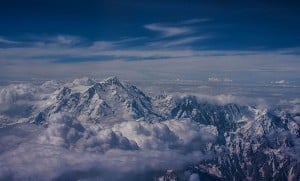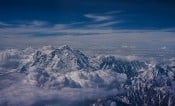In reply to hstmoore:
Some good advice above and it looks like your approach is solid. One further thing to add would be that whilst it's great to be ambitious and keen, that can be a first class way of getting into serious trouble, especially on predominantly rock routes where you feel you ought to be climbing at something like the equivalent to your home rock grade.
So don't be embarrassed to take your group on easy, trade routes such as the Aiguille du Tour: the reason they are trade routes isn't just because they are easy but because they are also interesting climbs that lead to good view points. The AC guidebook will help you work out which are good, "safe", introductory routes, though the mountains have changed since it was published so it'll be worth checking current conditions at the Guides' Office in Cham.
And if you haven't come across it, John Barry's instructional book on alpine climbing is a bit old (you should be able to find second hand copies easily enough) but it's inspiring, has good advice, and will help you think yourself into the right frame of mind.









